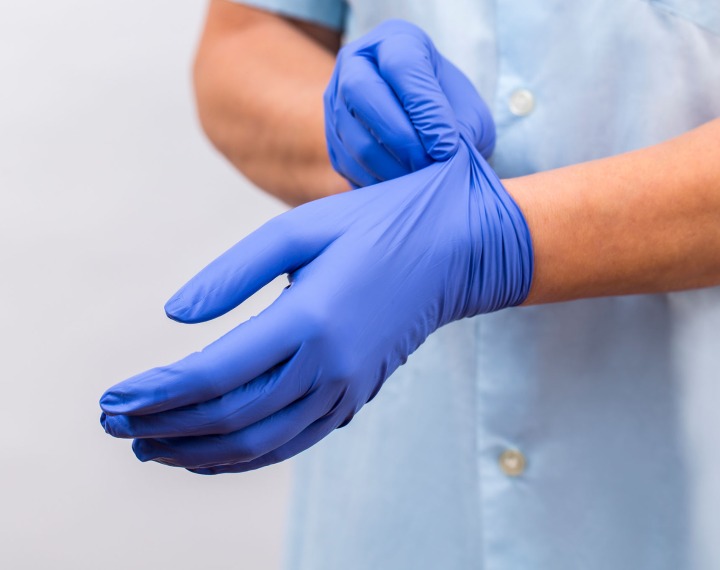



 Medical gloves mainly include four categories: disposable medical rubber examination gloves, disposable sterile rubber surgical gloves, disposable non-sterile rubber surgical gloves, and disposable medical poly (vinyl chloride) examination gloves. They play an indispensable role in protecting people's health, especially in the prevention and control of the COVID-19 pandemic, where medical gloves have become one of the key epidemic prevention materials.
Medical gloves mainly include four categories: disposable medical rubber examination gloves, disposable sterile rubber surgical gloves, disposable non-sterile rubber surgical gloves, and disposable medical poly (vinyl chloride) examination gloves. They play an indispensable role in protecting people's health, especially in the prevention and control of the COVID-19 pandemic, where medical gloves have become one of the key epidemic prevention materials.
China's mandatory standards for medical gloves include "GB 10213 Single-use medical rubber examination glove," "GB 7543 Single-use sterile rubber surgical gloves," and "GB 24786 Single-use medical poly (vinyl chloride) examination gloves," which are the adoption of ISO standards, as well as domestically formulated "GB 24787 Single-use non-sterile rubber surgical gloves" and "GB 24788 Limit for the removable surface powder and water-extractable protein of medical gloves."
In 2021, China began revising the above standards. Specifically, GB 7543-2006, GB 10213-2006, GB 24786-2009, and GB 24787-2009 were transformed into recommended national standards. The mandatory clauses concerning safety technical requirements from the four standards were integrated with GB 24788-2009 into a new mandatory national standard, renamed as "GB 24788 Safety technical requirements for medical gloves." On March 12, 2024, the Ministry of Industry and Information Technology (MIIT) began soliciting opinions on the new mandatory standard (draft for approval), with a deadline of April 12, 2024.
This new standard has no corresponding international counterpart, and compared to the original five mandatory standards, it has undergone significant changes in technical content and requirements. Implementing the new standard will require the transformation of existing production processes and related technologies, thus incurring costs for the modification of quality control and testing equipment to adapt to the requirements in the new standard. It is recommended that relevant production enterprises and testing institutions actively organize impact analyses of this standard to minimize compliance costs.


